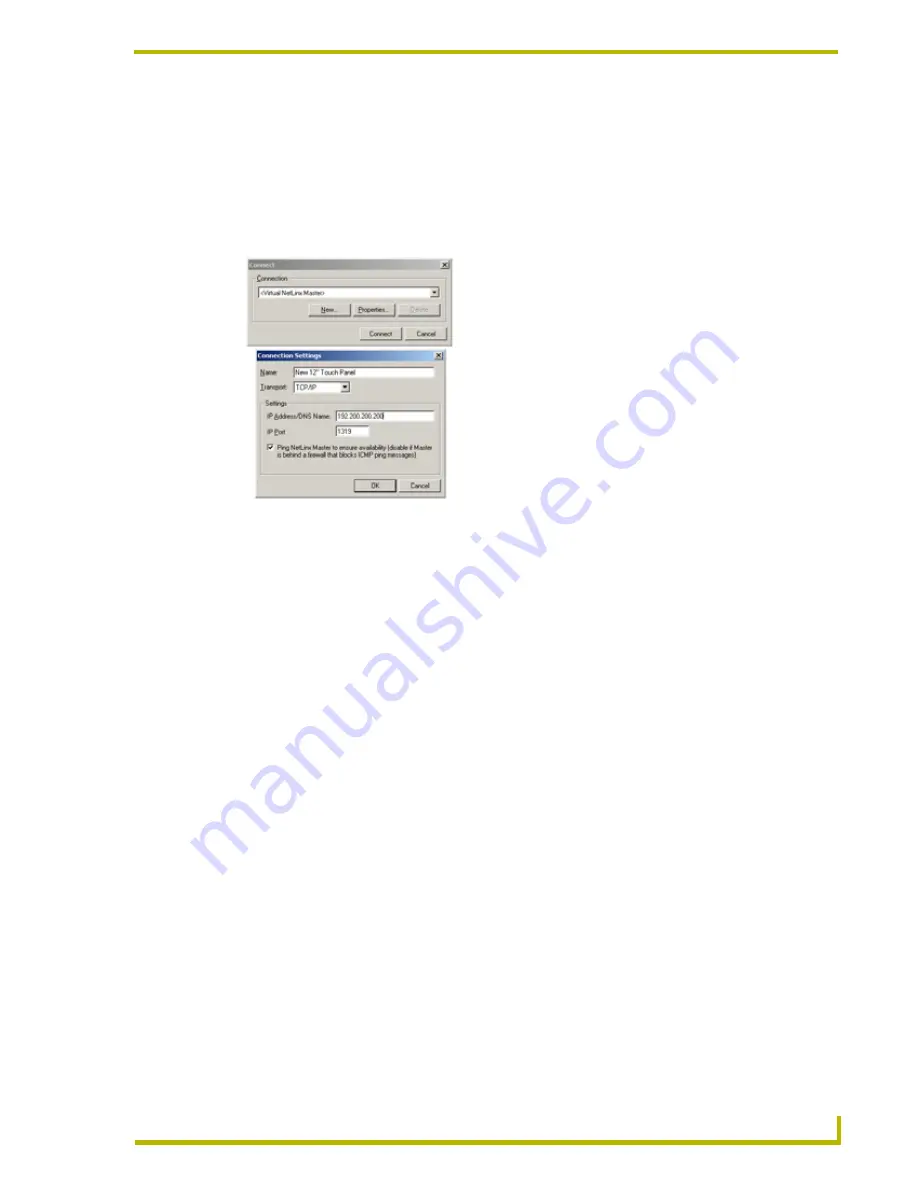
Using the DXP-PRO Wizard
73
DXP-PRO v1.1 - Programmer’s Guide
11.
Click on the radio button next to the desired transfer option for the files being sent to the panel.
12.
Click
Send
to return to the main TPD4 application, open the Transfer Status window pane
(along the lower half of the application window), and begin the transfer process. The files
upload progress is reflected on the touch panel LCD.
13.
After a successful upload is completed, the touch panel displays an AMX Design XPress
Professional - Logo page.
Working with your Project
If you did not select to automatically open the project file within NetLinx Studio (
C
in FIG. 25),
you will have to manually locate the file and open it within NetLinx Studio. Opening the
AXS
project in NetLinx Studio allows you to download the program data and user interface files to the
NetLinx system.
Upon completion of the Design XPress application the next step is to use NetLinx Studio to open
the created project file. From this point on, this document will assume the installer has a good
understanding of NetLinx Studio (it can be a difficult installation if the installer is a first time
Design XPress user and a first time NetLinx Studio user).
To open the workspace, use the
Open Workspace
option in the
File
menu and traverse to the path
where your project file resides. Once the workspace is open, expand all branches of the Navigator
view to see the files that have been created in the project. There is also an option in DXP-PRO
(upon completion of a project) that provides a popup dialog that gives you the option to
automatically open the newly created workspace in NetLinx Studio.
There is only one file under the
Source Code
branch:
Main.axs
. This is the main file and contains
most of the system configuration information entered into the application/wizard. All other
NetLinx software files are under the
Include
branch of the tree. There are a lot of include files
because the software is broken up by function. For example,
Lights_Tp.axi
contains the software
for controlling lights via the touch panels. All of the touch panel files are located under the
User
Interface
branch. The text files and report file are located under the
Other
branch.
To compile your project, open up the main source file and then select the
Build Active System
option under the
Build
menu (or click on the
Build Active System
icon from the toolbar below the
Main menu). Any time changes are made the software has to be compiled.
FIG. 26
TPD4 Connection/Connection Settings dialogs






























